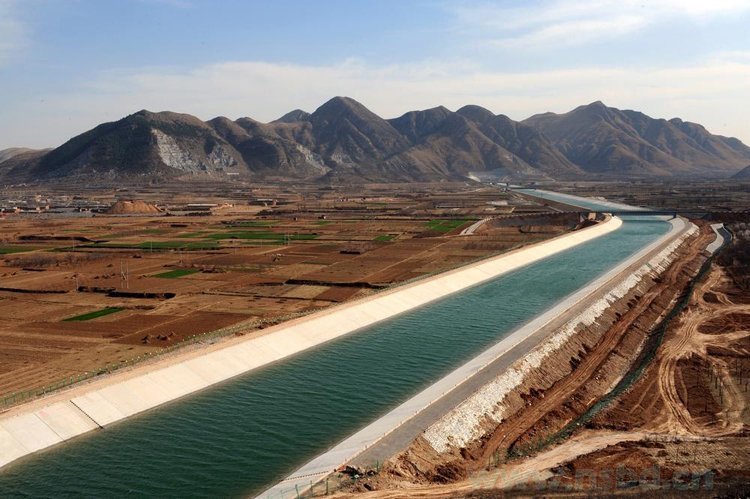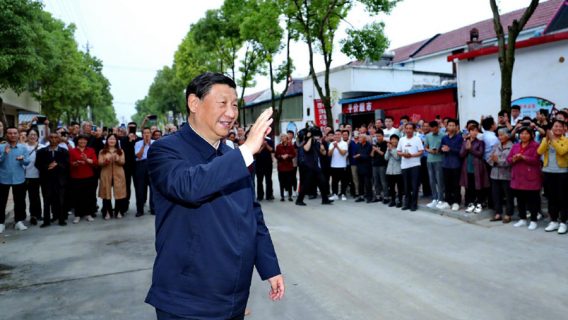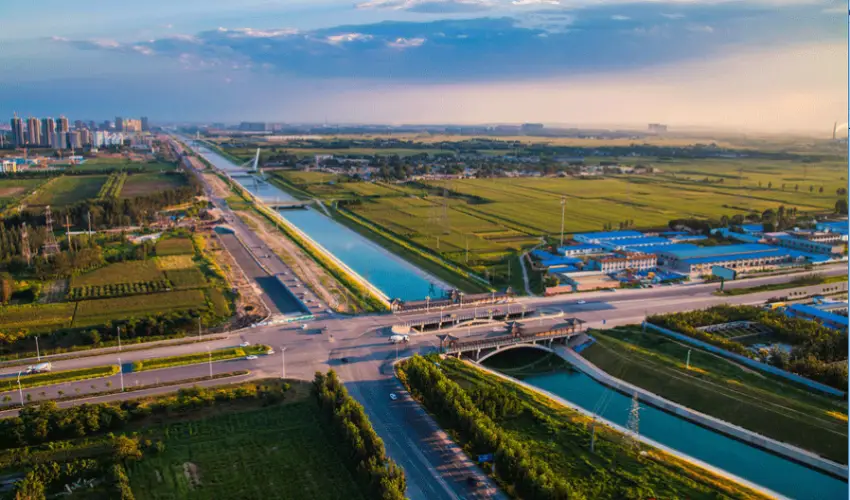The latest
Seven decades after the start of the survey and planning, the preliminary consensus for the development of the South-North Water Transfer/Diversion Project’s western route has been made. This was revealed by the China South-to-North Water Diversion Cooperation.
Reportedly, the relevant parties involved in the project have agreed to launch a water diversion program with a capacity of 4 billion cubic meters as the first phase of the western route.
Meanwhile, the eastern and middle routes which began operations in Nov 2013 and Dec 2014 respectively have transferred 65.4 billion cubic meters of water thus far.
Hundreds of cities in the north, including metropolises like Beijing and Tianjin have relied on the project as a major water source. To put this into perspective, the two routes have benefitted over 176 million people and replenished 10 billion cubic meters of water for ecological purposes.
The routes according to Jiang Xuguang, have also reversed the decades-long drop in underground water levels in the north and revived many rivers and lakes. Xuguang is the chairman of the China South-to-North Water Diversion Corporation Limited.
Overview of the South-North Water Transfer/Diversion Project
The South-North Water Transfer/Diversion Project is an over US$ 79bn multi-decade infrastructure mega-project in China.
The objective of the project is to divert approximately 44.8 billion cubic meters of fresh water annually from four rivers in the Southern region of the country. The rivers in question are the Yangtze River, the Yellow River, the Huaihe River, and the Haihe River.
The water will be directed to the more arid and industrialized northern region via three diversion routes. These routes are the Eastern, Central and Western routes, that cut across the eastern, central and western parts of the Asian country.
The Easter Route
The Eastern Route Project (ERP) which involved the upgrade of the Grand Canal is already complete and functional. This route is used to divert between 8.9 and 14.8 km3/year of the total flow of the Yangtze River (between 600 and 956 km3 per year) to Northern China.
Also Read: Mokolo Crocodile Water Augmentation Project (MCWAP) project timeline and all you need to know
Water from the Yangtze River is drawn into the canal in Jiangdu, where a giant 400 m³/s (12.6 billion m3/year if operated continuously) pumping station was built back in the 1980s. The water is then pumped by stations along the Grand Canal through a tunnel under the Yellow River and down an aqueduct to reservoirs near Tianjin.
The diversion is slightly over 1,155km long.

In addition to the canal, the Eastern Route Project (ERP) involved the construction of 23 pumping stations with an installed capacity of 453.7MW in the first stage alone to complement the seven existing ones, which will themselves be rehabilitated and upgraded.
This part of the project also includes nearly 9km of tunnels, from the outlet of Dongping Lake to the inlet of the Weilin Canal, including a 634m long siphon section, together with two 9.3m diameter horizontal tunnels 70m under the Huanghe riverbed.
The Central Route
The central route also known as the middle route will divert water from the Danjiangkou reservoir on the Han River via new canals near the west edge of the Huanghuaihai Plain to flow through Henan and Hebei Provinces to Beijing, a diversion route totalling up to approximately 1,267km in length. The nearby city of Tianjin will also draw water from the trunk line near Xushui in Hebei Province.
This route involves the construction or rather raising the height of the Danjiangkou dam by increasing the dam crest elevation from 162 m to 176.6 m above sea level. It also involved the construction of a canal to push water all the way from the Danjiangkou Reservoir to Beijing, without the need for pumping stations, and two tunnels of 8.5m internal diameter some 7km long, with a flowing design of 500m³/s.

The western route
Construction of the western route, which traverses the Qinghai-Tibet Plateau between 3,000m–5,000m above sea level involves overcoming some major engineering and climatic challenges.
Once completed in 2050, the project will bring 4 billion cubic meters of water from three tributaries of the Yangtze, that is the Tongtian, Yalong, and Dadu rivers, nearly 500km across the Bayankala Mountains and then on to northwest China.
South-North Water Transfer/Diversion Project team
Developer: South-to-North Water Transfer Project Company
Pre-project construction work: Hanjiang Water Resources and Hydropower
Project management: State Development and Planning Commission, the Ministry of Water Resources, the Ministry of Construction, the State Environment Protection Administration, and China International Engineering Consultant Corporation.
Infrastructure development plans: GCW Consulting
Design and planning for the Eastern Route: Haihe Water Resources Commission and Tianjin Hydroelectric Investigation and Design Institute
Design and planning for the Western Route: Yellow River Conservancy Commission
Design and planning for the Central route: Changjiang Water Resources Commission
Construction for the Eastern Route: Hanjiang Water Resources and Hydropower
Construction for the Central route: Danjiangkou Water Resources and Hydroelectric

South-North Water Transfer/Diversion Project Project Timeline
2002
Construction on the Eastern route officially began in December with a ten-year completion period.
2004
Construction began on the central route.
2008
A 307 km-long northern stretch of the central route was completed at a cost of US$ 2bn.
2013
Phase I of the Eastern route was completed and began operation in November.
2014
Water started arriving in Shandong
The Central/Middle route was completed and began operation in December of this same year.
2017
In Oct water reached Tianjin courtesy of the Eastern route
2020
In December, the South-to-North Water Diversion Project reportedly diverted 39.4 billion cubic meters of water to arid areas in the north through its middle and eastern routes over a period of six years benefiting more than 120 million people in northern China.
2021

In May, Chinese President Xi Jinping announced that the country would press ahead with the South-North Water Transfer/Diversion Project when he paid a visit to the people who were relocated for the country’s mega water diversion project on the second day of his trip to Nanyang, central China’s Henan Province.
